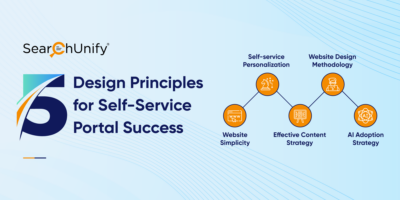
Petrifying customer service stories are everywhere; and with an instant outlet on social media, these have only become more horrifying. Found a dead lizard in your food? Tweet a photo. The airline lost your baggage? Air your grievance on social media.
There is no dearth of the abovementioned instances. No matter how good you are, such instances can happen. However, the way you handle them truly defines your customer relationships. If handled tactfully and empathetically, customer problems are opportunities in disguise. Let’s see how.
Exploring the Key to A Customer’s Heart
The loyalty of a customer doesn’t arise from “exceeding their expectations” on a 24/7 basis. Instead, it comes by delivering your value proposition round the clock. Loyal customers believe that they’ll have an outstanding experience at their favorite brand—if once in a while they don’t—the company will take every necessary step to alleviate the problem. Regardless of what the concern is, customers love to interact with brands that ensure the following:
1. Prompt Solution
In the era where social media is reigning digital experiences, prompt replies are kind of a no-brainer. Customers take their grievances on social media because it’s quick, easy, and they are already online. To make it even easier for them, empower your support team to triage and reply to incoming tweets and DMs as quickly as possible.

Source : Social Media Examiner
2. Proactive Assistance
Tap into your customers’ emotions to delight them. Customers leave digital footprints at multiple touchpoints with every interaction. Unify data from these touchpoints to ensure seamless customer onboarding, curate personalized UI and UX, and provide proactive customer service. Leverage artificial intelligence to map your customer journey and highlight where you can streamline and elevate CX without your customers asking for it.
3. Personalized Responses
Personalized responses are non-negotiable to show customers that you value them. It’s better to reply late than sending automated, irrelevant replies. Thanks to technology like sentiment analysis, you can detect negative sentiment and identify problems that need immediate attention. However, here’s the catch—most sentiment analysis tools simply classify words as positive, negative, or neutral, resulting in questionable analysis of sarcastic messages.

Source : NDTV
That is where AI-powered sentiment analysis comes into the picture. Powered by NLP and NLU, it understands the context of the entire sentence and then gets to the sentiment part; identifying negative messages in a timely manner and triaging them to the right agents who then can respond accordingly.
4. Surpass Customer Expectations
Read customers’ minds to gauge what would make their day. Go the extra mile to offer a piece of advice and recommend products or assets that’ll come in handy during their customer journey. Provide free trials of your products and services so that prospects have a better understanding of them before they invest for real. Empower your agents to go beyond just solving the problem.

Source : FreshDesk
5. The Human Touch
Delight is a feeling of excitement. It’s not possible to be delighted if the other person is not reciprocating with the same enthusiasm. Moreover, the kind of replies you send out reflects your brand personality. So, it’s okay to post light-hearted replies sometimes and show the customers that there’s a human typing it. Speaking your customers’ language will make them feel good and make your brand lovable.

Source : FreshDesk
Quantifying the Success Of Your Customer Support Team
Support teams struggle to get a go-ahead for their resources and initiatives because they are often looked upon as a mandatory cost and not a source of revenue. Imagine yourself as a support leader who is receiving requests from senior management to grow the team and deploy state-of-the-art technology. All this is possible if you focus on the long-term gain of a loyal customer base and empower your support team to go above and beyond closing tickets.
Create a set of value offerings and capitalize on them to elevate your position within the organization. You can bring yourself to the strategic table only by adding value to your organization’s growth . But as the saying goes, ‘if you cannot measure it, you cannot monetize it.’ Following are a few customer support metrics to live by:
1. Customer Retention Rate
It quantifies the percentage of customers that the company has successfully retained over a given time. Since support agents are your frontline ambassadors, they play a huge role in making customers stick around. Decent customer retention is an indication of your support team’s success.

For your brand to remain scalable and strong, aim for at least 85 percent of Customer Retention Rate.
2. Net Promoter Score
It is the leading metric for measuring customer satisfaction and brand loyalty. Taking the measurement of customer satisfaction a step ahead, it helps you quantify the number of people who would happily recommend your brand.

Technically, any NPS above zero can be considered a “good” score, since that implies that you have more promoters than detractors.
3. Customer Satisfaction Score
It is a measurement of customers’ happiness levels with your products and services. Either conduct an end-of-interaction survey or track customer sentiment to gauge how satisfied a customer is with your product and services.

While CSAT scores vary by industry, an ideal score will typically fall between 75 percent and 85 percent.
4. Repeat Purchase Rate
It quantifies the percentage of your current customer base that has come back to shop again or re-avail your services. Influenced by your efforts at customer retention, this metric is indeed a great way to measure your brand loyalty.

As per Adobe Digital Index, 8 percent of repeat visitors account for as much as 41 percent of revenue.
Want to Know How You Can Reshape CX With AI & Cognitive Technology?
By and large, everyone has a “Nordstrom’s story” that never goes like, “I bought a dress at Nordstrom’s, and everyone loved it at the party.” Far from it, the classic “Nordstrom’s story” involves a purchase issue and how their support team goes out of their way to quickly and effectively handle the problem, winning their customers’ hearts all over again.
If you are also looking for a way to deliver stellar CX just like Nordstrom’s, deploying cognitive technology is your best pick. Tune in to our webinar, Double Win: Transforming Customer And Employee Experience With AI, and learn how.


















